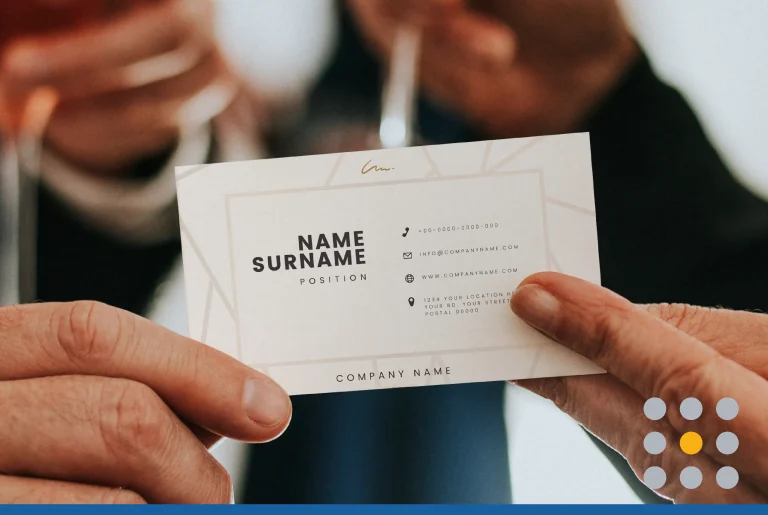Branding is the basis of a good sales strategy because it tells you who to target and how to present your products. When given choices, customers quickly rule out products that don’t fit their expectations.
Branding your business adds fuel to your sales pitch. Branding is the sum of everything you do and the experience you create for customers. People buy more from you if they believe in your brand values and trust you to make good products.
Unlike big businesses, you don’t have to spend loads of money to build loyalty. Good branding is about delivering on your promises. And as a small business owner, you have the advantage of getting to know your customers one on one.
If you want to keep customers coming back, here’s how to brand your business on a budget.
Refine your brand identity
Businesses of all sizes can succeed in the same marketplace because they serve different people. If you give your brand a personality, you attract customers who like what you stand for. Complete a SWOT analysis to figure out what makes your business unique.
- Strengths: List traits and skills that give you an advantage over competitors. Do you have specialized knowledge? High-quality materials? Eco-friendly production methods?
- Weaknesses: List areas where you can improve and traits that put you at a disadvantage. Are your prices higher than competitors? Do you have a smaller product selection? Slower delivery times? Major experience gaps? Financial limitations?
- Opportunities: Think of ways you can use your strengths to create a better customer experience than your competitors. Do you offer services that aren’t readily available in your area? Do you offer more flexibility and convenience?
- Threats: List external obstacles that could prevent you from meeting business goals? Think about trends in the industry or economy that could hurt your business.
Different customers have distinct needs, so don’t try to be everything to everyone. Customers won’t connect with your products if your brand identity is too broad. Instead, emphasize your strengths and downplay your weaknesses.
Cars are the perfect example. Ford is known for affordable innovation. The brand appeals to practical drivers, especially parents, who care most about safety and long-lasting value. Porsche caters to pleasure-seekers who value status and speed over space and versatility.
Get insight from customers
Don’t assume you know what matters to customers. Talk to them for insight about what you’re doing right, compared to competitors. Use buyer personas to outline customer behavior and tailor your branding. A buyer persona is a fictional profile with traits that represent a core customer group. Gather as much information as you can from various sources, such as:
- Interviews
- Surveys
- Sales data
- Research studies
- Competitor websites
If you don’t work solo, more people are involved in delivering a good experience. In addition to interviewing loyal customers, talk to sales staff, managers and non-customers. Employees have insight about common obstacles that prevent a sale. And while it’s hard to hear bad feedback, people who don’t choose your business can shed light on factors that drive customers away.
Tailor brand messaging to buyers
Good buyer personas make it easy to relate to your customers. They should answer key questions about buyers.
- What is the customer’s age? Gender? Occupation?
- What problems does the customer face?
- What motivates the customer to look for a solution?
- What emotions does a customer experience when using a specific product?
- What features are most important to the customer experience?
- How does the buyer’s background relate to purchasing decisions?
You can have multiple personas to represent different customer groups, but each profile should paint a clear picture.
Create a consistent visual story
A consistent visual theme makes your brand personable and easy to remember. Use your research to design a relatable logo and tagline that speak to your customers. A good logo can convey emotions even without words, and customers feel a connection every time they see it.
Make a list of colors, words, and symbols that relate to your brand values. If you look at the Pinterest logo, the bright red color evokes boldness and trendiness. The letter “P” inside a circle is clean and simple. The “P” also ends in a point to represent pinning ideas to a digital vision board. If your logo only includes a business name, try to choose unique lettering. Picture the signature fonts of Nintendo and Virgin Group.
Whether you create a logo on your own or work with a pro, the design should be easy to print on a variety of media. Put the same visual elements on your website, facilities, uniforms and marketing materials. Customers have strong reactions to brands, so placing visual cues all around boosts trust and recognition. And customers who like your brand are more receptive to advertising.
Develop a brand language
Memorable phrases, taglines and trademark names set you apart from competitors. Chances are, you remember hundreds of catchy slogans and jingles from childhood. Even better, when you coin the name for a process or type product, everyone associates it with your brand. Forever. Many search engines exist, but Internet users collectively think of all online search activity as “Googling.”
If you have diverse products, create series name to create uniformity. Trademark names are especially useful for unique products, equipment or methods. Imagine a carpet cleaner who develops a signature cleaning solution. Customers know they can only get this proven solution from one business. Loyalty increases, and the business gains positive recommendations that bring in new customers.
Use social media to expand your reach
Even without trademarks, you can build your brand by spreading signature phrases online. Recruitment expert Liz Ryan popularized the term “human-voiced resume,” by turning it into a Twitter hashtag. Ryan consistently uses her branded language in blogs, comments, photo captions and social media posts. Over time, this simple repetition encourages your customers to adopt your terminology.
Branded language also adds to your credibility, identifying you as an expert. Be consistent in all communications, using branded phrases whenever possible. Engage with customers in meaningful ways. Answer their questions. Listen to complaints and offer resolutions. Volunteer advice on relevant problems, or share fun content. People enjoy authentic exchanges, so being kind and friendly can grow your audience. Not to mention, getting more people to search for branded phrases leads traffic directly to your website.
Update, update, update
Branding your company doesn’t have to be expensive, but it is time-consuming. One of the biggest mistakes you can make is ignoring your branding after the initial legwork. Customer needs and industry standards change.
To stay relevant, keep evaluating your business to spot new threats and opportunities.
Improve your visibility in as many places as possible. It’s not enough to have just a static website or one social media profile. Create a wide variety of touchpoints where customers can find you. And above all, make sure every interaction is positive and memorable.
> Branding your business? Start off on the right foot by making a great logo design.







